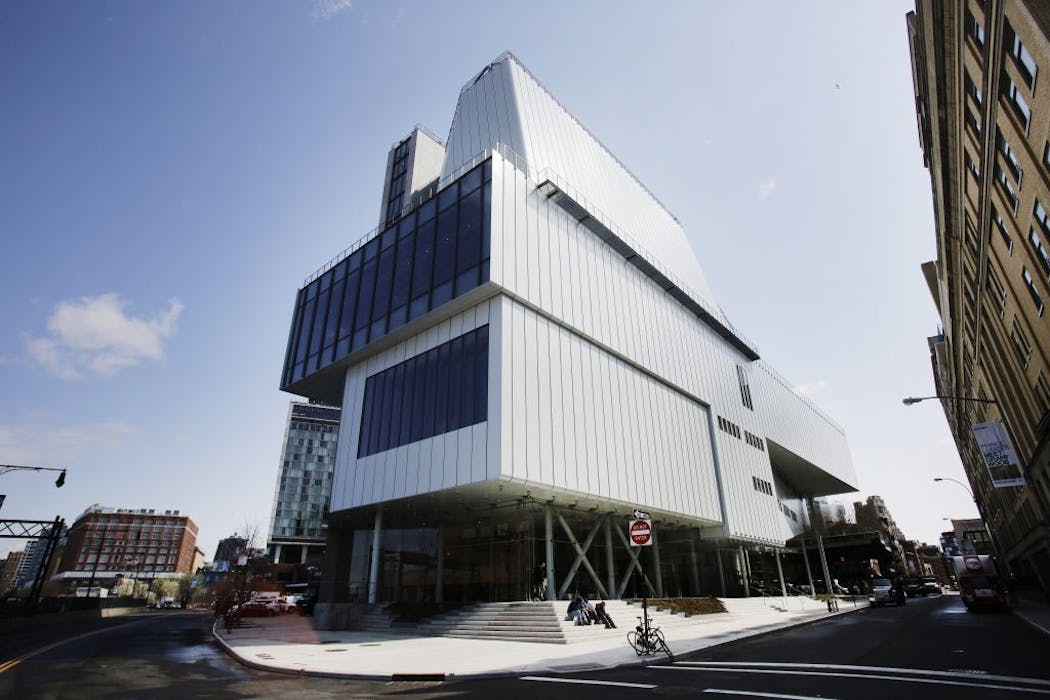Although she's been a New Yorker for more than a decade, many Minnesotans will recognize Wendy Lubovich from her 13-year stint as a news anchor at KSTP-TV.
In her latest career, the Hibbing native has become an expert on New York's museums, offering small-group tours via her company, Walk of Art (walk-of-art.com). Lubovich also spent a year researching and writing the just-published "111 Museums in New York That You Must Not Miss" (Emons, $19.90). The guidebook introduces readers to the well-known (the Metropolitan Museum of Art, aka the Met) and the obscure (National Museum of Mathematics, Self-Taught Genius Gallery), covering a far-flung range of subjects that include art, baseball, sex, gangsters, bonsai and maps.
Q: Why 111?
A: The number originates with my publisher. It's a catchy number, and they've used it to launch a series of books around the world [including "111 Places in the Twin Cities That You Must Not Miss," by Elizabeth Foy Larsen].
Q: Was it more difficult to come up with 111 examples, or to whittle your options down?
A: It was more the latter. When I began, I wasn't really sure which way it was going to go. It was pretty intense: Can you go to 111 museums in a year, and then write about them? I started with the mainstream museums and then set out to discover the hidden ones, and one led to another, and another, and another, and pretty soon I had more than 130 of them. And since we've finished the book, several new ones have opened, including the Museum of the Dog (museumofthedog.org). The plan is to keep updating the book in small batches to keep it current.
Q: The book devotes two pages to each museum — text on one, photo on the other. What was your strategy for encapsulating the city's huge attractions?
A: With the big museums, we decided to go small, and look at a single work, or choose a work that everyone thinks that they know but has surprising elements. For the Met (metmuseum.org), there's the famous painting in the American Wing, "Washington Crossing the Delaware" — it's a Christmas Day attack, with boats crossing the river — and there are all of these historical inaccuracies embedded in the canvas. He's holding the American flag, but the flag wasn't adopted at that point. There are horses and men standing in these shallow boats, which in real life would have tipped over, but they look great. It's the light of day, but the attack took place at midnight. When you know these things, you think about it in a whole new way.
Q: I was delighted to see you included the Museum at Eldridge Street (eldridgestreet.org). When my Queens-born tour guide took me around this restored late-19th-century synagogue and said, "Isn't it bee-you-tee-full"? it became an immediate Manhattan favorite of mine. Is it one of yours?
A: Yes. I love it that it's right in the middle of all of these dumpling shops. It's so completely unexpected. It's very different from the synagogues on the Upper East Side. It was practically falling in when they started to restore it. There's a giant circular window that was damaged by a storm, and contemporary artist Kiki Smith made a new one, so there's this modernity mixed in with the original 1887 interior. They do one-on-one tours, it's very intimate.
Q: Which classic institutions are closest to your heart?
A: The Frick (frick.org) is always a refuge for me. It's so quiet, it's as if you were a guest in someone's home. Surprisingly, sometimes it's the biggest museums that can be the most private. As busy as the Met is, I find refuge there. There's always a little corner where you're all alone, looking at an object that you had no idea existed.
Q: I'm often drawn to museums for their architecture. Is there a place that I don't know about?
A: The Mossman Lock Collection (generalsociety.org)! I know, a museum about locks? It's located inside the General Society of Mechanics and Tradesmen building. These are the people who built New York, and so their building is exquisite, and no one knows about it. There's a giant Tiffany window, and wonderful Corinthian columns, and a double-height library. When you go upstairs, the guard will probably have to turn the lights on for you, because you'll be the first person who's been there in a week. They'll hand you a booklet that's right out of the 1950s, and it tells you all about locks. Think about locks, they're built to protect lots of money and goods in beautiful vaults. They're engraved in extraordinary ways. The collection goes from 4000 B.C. to the present day. It's one man's obsession, in an exquisite building.
Q: The Cloisters (a museum of medieval art), sits at the top of Manhattan. Is it worth the effort to get there, even for someone not particularly interested in medieval art?
A: Yes, it's magical. It's a bit of a journey to get there, and the moment that you enter you're completely transported into another time. It's a different art than we're used to seeing. The Unicorn Tapestries are wonderful, and you need to see them up close to understand their intricacies.
Q: "Hamilton" played to packed houses last fall in Minneapolis. Is there anything of Alexander Hamilton to see?
A: His home, Hamilton Grange (nps.gov/hagr), is up in Harlem. It's funny, because there's a funeral parlor nearby, and a coffee shop, and then this classical-looking house. It's the last house that he built; it was in the country at the time. There's a poignancy that's connected to it, because he died in that duel not long after it was built.
Q: Do you have any favorite museum restaurants?
A: I like the restaurant at the Met Breuer (metmuseum.org). It feels kind of secret, but it's right on Madison Avenue. I like the restaurant at the new Whitney (whitney.org); it's called Untitled. It has great views of the whole Meatpacking area; it feels like it's integral to what's happening. And Café Sabarsky at the Neue Galerie (neuegalerie.com) is my ultimate retreat. It's the most atmospheric cafe in all of New York City. The chestnut soup is my favorite, and you're sitting in those velvet booths, with windows looking out to Central Park. If you're lucky, you can go on cabaret night, when there's a singer, and a piano.
Q: Do you whirl through museums to see as much as possible or spend hours in a single gallery?
A: Both. When I'm out of town on my own, I'm always tempted to try and see everything, and I have to slow myself down. It's better to see fewer objects and spend more time with those objects. Don't spend all your time reading the text. Spend more time with the painting, really look at it. See the brushwork, the tonality of the color, the ideas embedded in the composition. It's better to go online afterward and look up the factual elements. It's so much better to be in the moment and dive in, and be patient. But that's hard, because we're so used to moving so fast, on our phones. That's why museums are so important, because they're places where you can escape and disconnect from the world.


